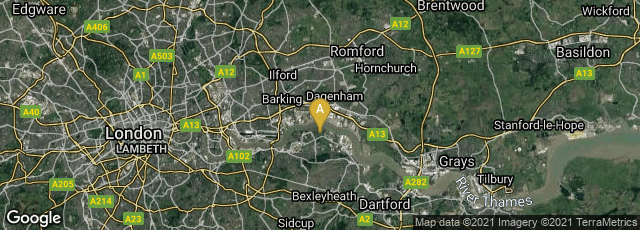For a long time I wondered how bookbinders in the mid-19th century created the deeply embossed relievo leather bindings such as Edmonds & Remnants binding for
the Victoria Psalter, or the even more deeply embossed wooden covers for
Owen Jones' edition of The Preacher. It was evident that some kind of powerful press was employed, but what type specifically?
In his
A History of English Craft Bookbinding Technique (1988) Bernard Middleton indicated that Edmonds & Remnants used a very powerful fly embossing press for this purpose, and reproduced as his figure 82 an image of the press from Tomlinson's
Cyclopaedia of Useful Arts and Manufactures.
According to cool.culturalheritage.org, during the late 1820s Parisian bookbinder
Joseph Thouvenin probably
first applied the fly embossing press to bookbindings. We may presume that initially a fly press would have been of a modest size. However, by 1849 in order to produce their bindings on
The Victoria Psalter and
The Preacher, and other deeply embossed bindings that were fashionable at the time, Edmonds & Remnants had a huge fly embossing press built in the basement of their establishment. Regarding the process Tomlinson, along with an illustration of the press in use, provided a considerable description as part of his detailed discussion of then-current commercial bookbinding practices and equipment. This I quote from the 1854 edition,
Vol. I, pp. 158-159. It is unclear as to whether the exact process described by Tomlinson, or some modification of the process, was used to produce the specific covers of the bindings on
The Victoria Psalter or
The Preacher, but it is evident that Edmonds and Remnants used their super powerful fly embossing press for the purpose:
"The cover of the book may be of leather or of cloth; but in either case it is ornamented at the back and sides with a pattern enclosed within a figured or flowered border, with different toolings and devices for the back, and blank borders for the gilt lettering or other ornaments. These are stamped, by means of certain presses, varying in power, with the material to be embossed. The largest press which is used for embossing leather, is a ponderous fly-press, Fig. 174, situated in the cellar of the establishment. It consists of a solid iron frame, resting on a brick foundation, and well secured by iron ties. The lower bed of press (also of iron) is preformed with two openings into which a gas-pipe, formed like a work with two prongs, and connected with a flexible tube, is inserted, for the purpose of heating the lower bed, upon which the metal die containing the pattern is placed, and by this means the die is kept at a tolerably steady high temperature, which is found most favourable for embossing. The dies are formed either of steel or brass, the latter being the more common. The dies are cut or chased by hand; but, for some patterns, consisting of regular curves, they can be more economically turned in the leather, in which case brass must be used. The counter die, which is attached to the upper bed of press, is formed by the man who manages the press, by glueing a number of pieces of millboard together, and glueing them them to surface of the upper bed. By swinging the arms of the press round, the lower surface of the millboard is brought down with amazing force upon the metal die, and the softer material takes the impression of the harder. The man then cuts and trims and adjusts the counter die, every now and then taking impressions on paper, and when he is satisfied with this arrangement, he proceeds to emboss the leather pieces cut to the proper size for covering the book. In order that he may place the leather evenly in the press, so as to receive the impression in the exact spot required, the lower die is formed with a millboard collar (Fig. 173), so that all he has to do is to place the leather, face downwards, on the square, or whatever figure it may be, which is the exact size of the leather, making the two upper corners of the leather coincide with the corners
a b of the collar. This being done, the embosser, who is seated in a pit before the frame, directs the man on the floor above to work the press. This man swings round the ponderous arm, furnished with two huge balls at its extremities, and the weight as well as the centrifugal force of this arm, the upper bed is jerked down upon the lower one, and the leather, in an instant takes the impression of the die. Every piece of leather requires to be passed three times through the press,—once for the back, which is, of course, of a different pattern to the sides, and once for each of the sides. If the two sides are of the same pattern, the man embosses all the leathers on one side,—say the left, —and, in order to save the necessity of turning round and re-adjusting the die, he carries the leathers to the other side of the press, and then works all the right hand sides."
